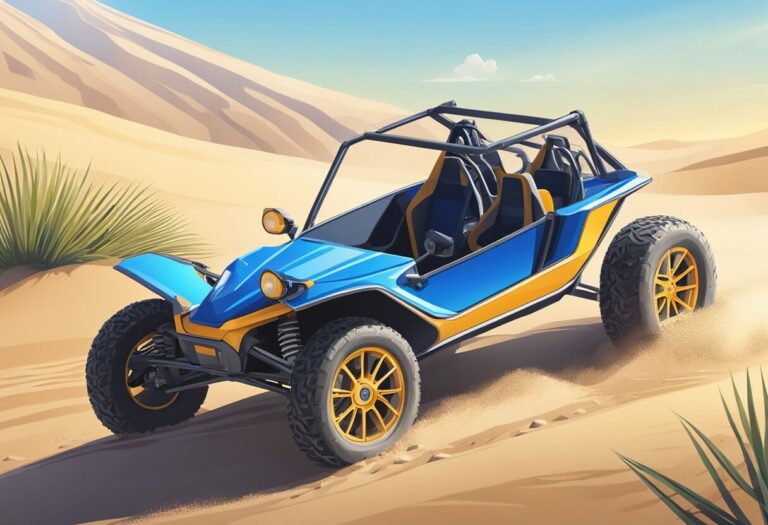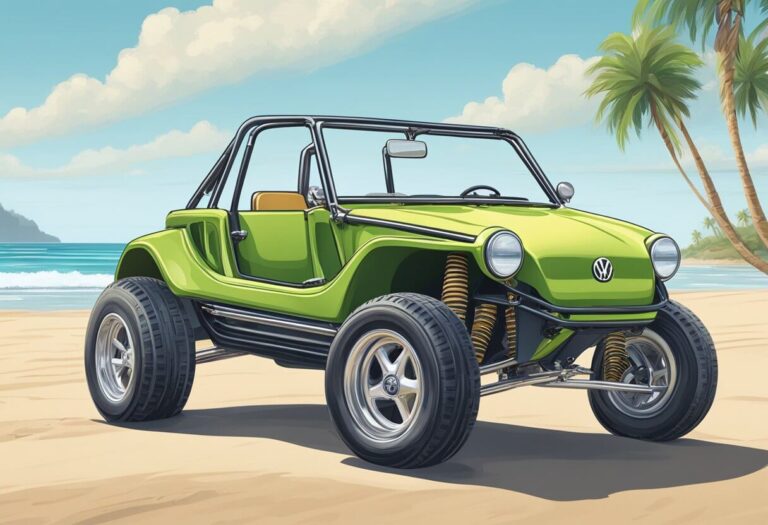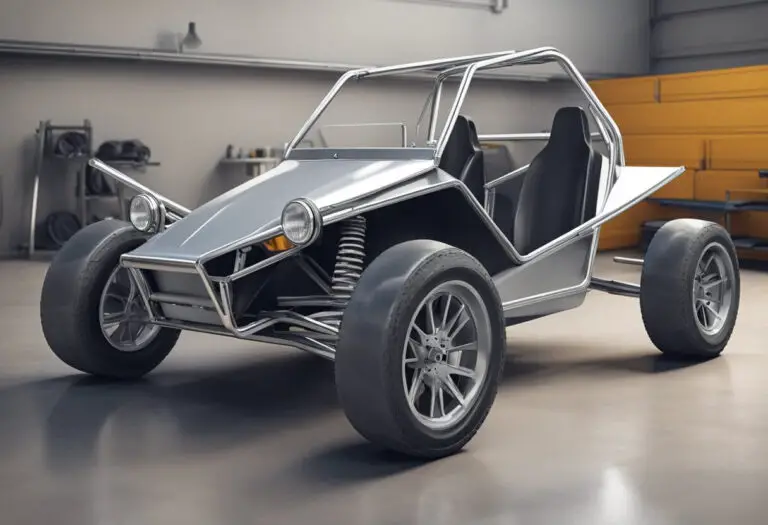Dune Buggy Frames with Suspension: Ultimate Guide
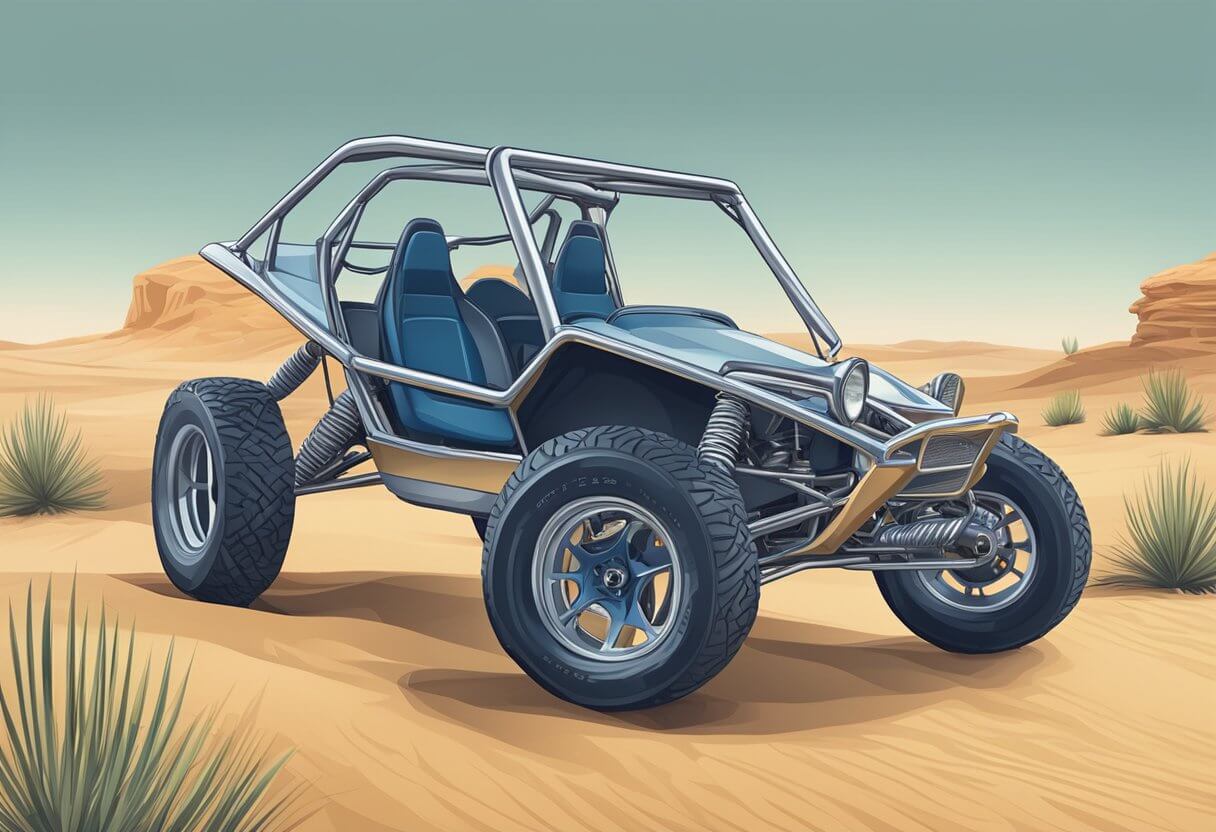
Off-roading is an exhilarating experience, but one that can quickly turn unpleasant without the right equipment. Dune buggies allow drivers to explore sandy terrain, but the ride quality depends largely on the vehicle’s suspension system. So what type of dune buggy frame works best for off-road conditions?
The best frames have an integrated suspension system to absorb bumps and vibration. Independent front and rear suspension provides the smoothest ride over uneven ground.
In this article, we’ll cover:
- Types of dune buggy suspension systems
- Building a frame with integrated suspension
- Installing and optimizing the suspension
- Maintenance tips to prevent wear and tear
By the end, you’ll know what makes for the ultimate dune buggy frame and suspension set up. Let’s hit the sand!
Overview of Dune Buggy Frames
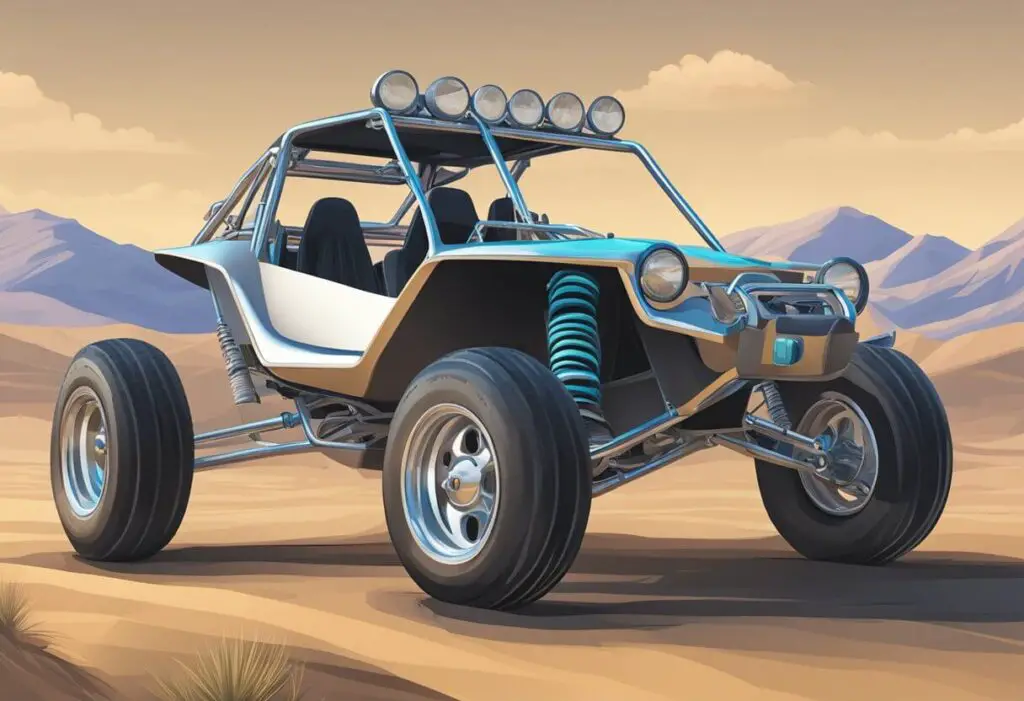
Dune buggies are lightweight, off-road vehicles designed for use on sand dunes, beaches, and other rough terrains. A dune buggy frame is the backbone of the vehicle, and it is responsible for providing structural support, stability, and suspension. In this section, we will provide an overview of the materials used and the design principles behind dune buggy frames.
Materials Used
Dune buggy frames are typically made from lightweight, high-strength materials such as chromoly steel, aluminum, or fiberglass. Chromoly steel is a popular choice for dune buggy frames because it is strong, lightweight, and resistant to corrosion. Aluminum is also a good choice because it is lightweight and easy to work with. Fiberglass is another popular material for dune buggy frames because it is lightweight, durable, and easy to shape.
Frame Design Principles
The design of a dune buggy frame is critical to its performance and safety. The frame must be strong enough to withstand the stresses of off-road driving, yet flexible enough to provide a smooth ride. Some of the key design principles behind dune buggy frames include:
- Suspension: Dune buggies typically use independent suspension systems to provide a smooth ride and better handling. The suspension system must be designed to handle the rough terrain and high speeds associated with off-road driving.
- Weight distribution: The weight of the dune buggy must be distributed evenly across the frame to ensure stability and handling. The engine, driver, and passengers must be positioned in a way that balances the weight of the vehicle.
- Roll cage: A roll cage is an essential safety feature of a dune buggy frame. It provides protection for the driver and passengers in the event of a rollover or other accident.
- Bracing: Bracing is used to reinforce the frame and prevent flexing and bending under stress. Bracing can be in the form of crossbars, gussets, or other structural elements.
In summary, a dune buggy frame is a critical component of the vehicle’s performance and safety. The materials used and the design principles behind the frame must be carefully considered to ensure a smooth ride, good handling, and maximum safety for the driver and passengers.
Types of Dune Buggy Suspension
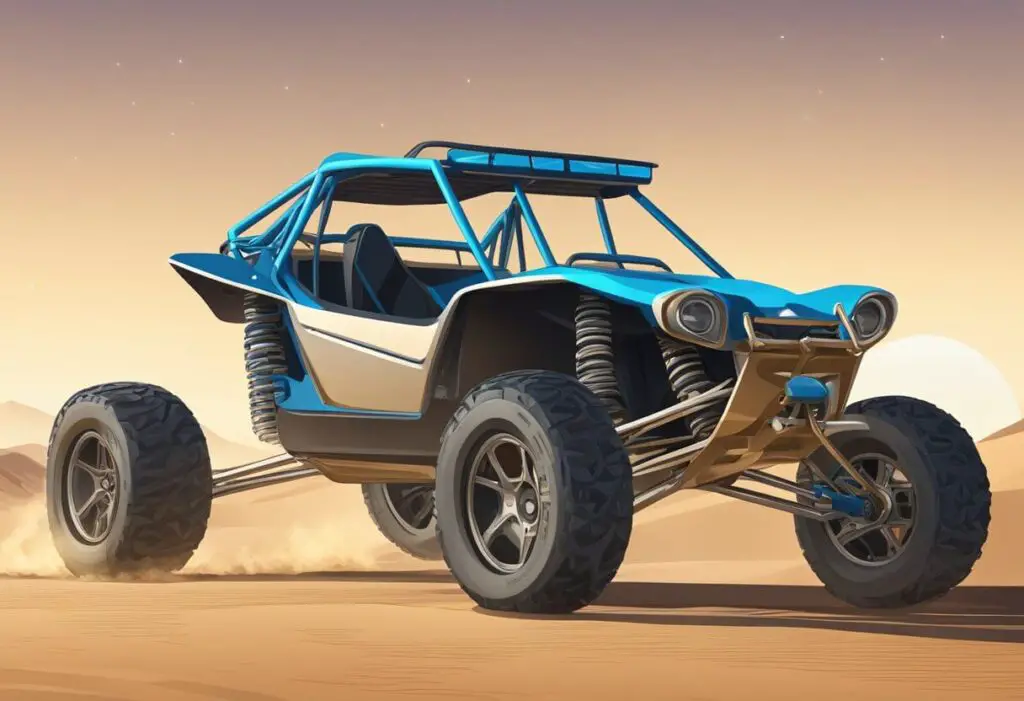
When it comes to dune buggy frames, the suspension is a critical component that can make or break the vehicle’s performance. There are two main types of dune buggy suspension: independent suspension and solid axle suspension. Each type has its own advantages and disadvantages, and the choice will depend on the driver’s preferences and intended use.
Independent Suspension
Independent suspension is a type of suspension system where each wheel is attached to its own suspension unit. This allows each wheel to move independently of the others, which can result in better handling, stability, and comfort. Independent suspension is typically used in high-performance dune buggies that require precise handling and a smooth ride.
One of the most common types of independent suspension used in dune buggies is the A-arm suspension. This type of suspension uses two A-shaped arms to connect the wheel to the frame. The arms are attached to the frame at one end and the wheel hub at the other, and a shock absorber is used to dampen the movement of the wheel.
Another type of independent suspension used in dune buggies is the trailing arm suspension. This type of suspension uses a single arm that is attached to the frame at one end and the wheel hub at the other. The arm is designed to “trail” the wheel, which allows it to move up and down independently of the frame.
Solid Axle Suspension
Solid axle suspension is a type of suspension system where both wheels on an axle are attached to the same suspension unit. This means that the movement of one wheel will affect the movement of the other. Solid axle suspension is typically used in dune buggies that require more ground clearance and rugged off-road capabilities.
One of the most common types of solid axle suspension used in dune buggies is the swing axle suspension. This type of suspension uses a single axle that is attached to the frame at one end and the wheel hubs at the other. The axle is designed to “swing” up and down, which allows the wheels to move independently of the frame.
Another type of solid axle suspension used in dune buggies is the torsion bar suspension. This type of suspension uses a torsion bar that is attached to the frame at one end and the wheel hubs at the other. The bar is designed to twist as the wheels move up and down, which allows the wheels to move independently of the frame.
In conclusion, the choice of suspension will depend on the driver’s preferences and intended use. Independent suspension is ideal for high-performance dune buggies that require precise handling and a smooth ride, while solid axle suspension is ideal for dune buggies that require more ground clearance and rugged off-road capabilities.
Building Your Own Frame
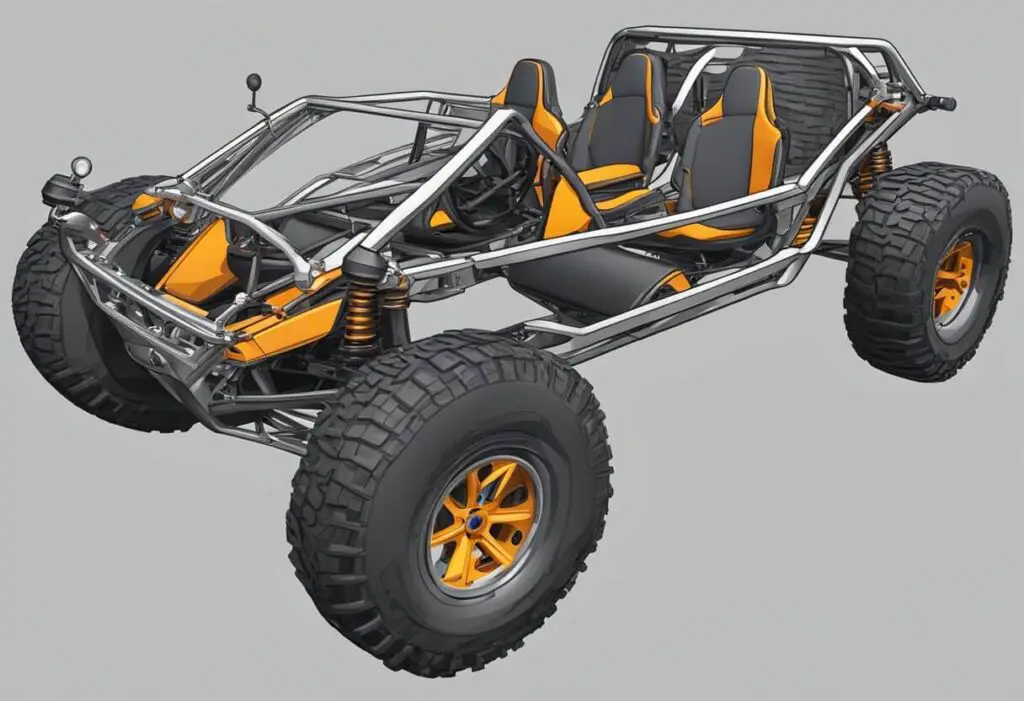
Building a dune buggy frame with suspension is a challenging but rewarding project. With the right tools and equipment, anyone can construct a sturdy and safe frame that can handle the rigors of off-road driving. In this section, we will provide a step-by-step construction guide for building your own dune buggy frame with suspension.
Safety Considerations
Before beginning any construction, it is important to consider safety first. Always wear protective gear, such as gloves and safety glasses, when working with power tools and welding equipment. Make sure your workspace is well-ventilated to prevent inhaling harmful fumes produced by welding. Additionally, it is important to have a fire extinguisher nearby in case of an emergency.
Tools and Equipment Required
Building a dune buggy frame with suspension requires several specialized tools and equipment. Some of the essential tools and equipment include:
- Welder (MIG or TIG)
- Angle grinder
- Chop saw or band saw
- Drill press
- Hand tools (wrenches, sockets, pliers, etc.)
- Measuring tools (tape measure, square, level, etc.)
Step-by-Step Construction Guide
- Begin by designing your frame using a CAD program or by drawing it on paper. This will help you determine the dimensions and angles needed for each piece of tubing.
- Cut the tubing to the desired length using a chop saw or band saw. Use a square to ensure that each cut is straight and accurate.
- Use a drill press to drill holes in the tubing where needed. This will allow you to connect the pieces of tubing using bolts or rivets.
- Use an angle grinder to grind the ends of each piece of tubing to create a beveled edge. This will make it easier to weld the tubing together.
- Use a MIG or TIG welder to weld the tubing together. Make sure to follow proper welding procedures to ensure a strong and safe weld.
- Once the frame is complete, add the suspension components, such as shocks, springs, and control arms. Make sure to follow the manufacturer’s instructions when installing these components.
- Finally, add any additional components, such as a roll cage, seats, and steering components. Make sure to test the frame thoroughly before driving the dune buggy off-road.
By following these steps and taking proper safety precautions, anyone can build a sturdy and safe dune buggy frame with suspension. With a little patience and attention to detail, you can create a custom frame that will provide years of off-road fun.
Suspension Installation
When it comes to dune buggy frames, the suspension is one of the most important components to consider. The suspension system is responsible for absorbing the shocks and bumps that come with off-road driving, ensuring a smooth and comfortable ride for the driver and passengers. In this section, we will discuss the installation of the front and rear suspension systems for a dune buggy frame.
Front Suspension Setup
The front suspension of a dune buggy frame typically consists of a Volkswagen, Type 1 King Pin front axle. The beam must be mounted securely to the frame, and the shocks and springs must be installed correctly to ensure proper suspension. It is important to use high-quality shocks and springs that are designed for off-road use to ensure maximum performance and durability.
To install the front suspension, start by mounting the beam to the frame using the appropriate hardware. Next, install the shocks and springs, making sure to follow the manufacturer’s instructions carefully. It is important to ensure that the shocks and springs are installed in the correct orientation and that all bolts and fasteners are tightened to the manufacturer’s specifications.
Rear Suspension Configuration
The rear suspension of a dune buggy frame typically consists of a swing axle or IRS (Independent Rear Suspension) setup. The IRS setup is generally preferred for off-road use due to its superior performance and handling characteristics. The IRS system provides better stability and control, especially when driving over rough terrain.
To install the rear suspension, start by mounting the rear axle to the frame using the appropriate hardware. Next, install the shocks and springs, making sure to follow the manufacturer’s instructions carefully. It is important to ensure that the shocks and springs are installed in the correct orientation and that all bolts and fasteners are tightened to the manufacturer’s specifications.
Performance Optimization
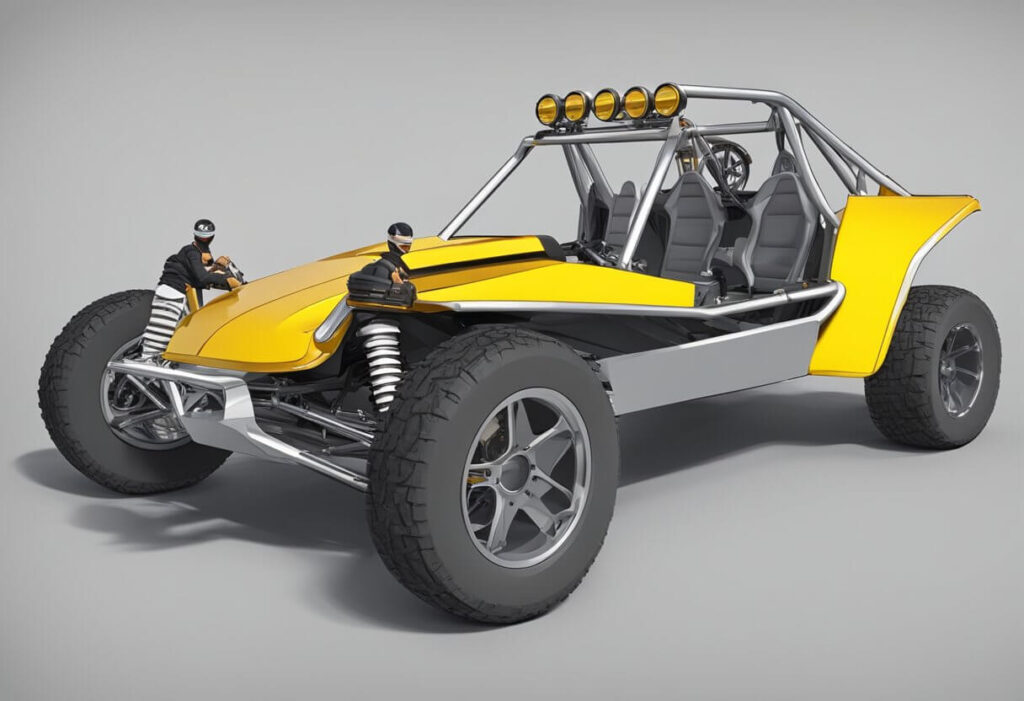
Adjusting Suspension Settings
To optimize the performance of a dune buggy with suspension, it is important to adjust the suspension settings to suit the specific terrain and driving conditions. The ideal suspension settings will vary depending on the weight of the vehicle, the type of suspension system, and the type of terrain being driven on.
One important factor to consider when adjusting suspension settings is the ride height of the vehicle. Lowering the ride height can improve handling and reduce body roll, while raising the ride height can improve ground clearance and off-road performance.
Another important factor to consider is the stiffness of the suspension. Stiffer suspension settings can improve handling and reduce body roll, while softer settings can improve ride comfort and off-road performance. It is important to find the right balance between stiffness and comfort to achieve optimal performance.
Weight Distribution and Balance
Weight distribution and balance are also important factors to consider when optimizing the performance of a dune buggy with suspension. Proper weight distribution can improve handling and traction, while improper weight distribution can lead to instability and poor performance.
One way to improve weight distribution is to adjust the placement of heavy components such as the engine and fuel tank. Moving these components closer to the center of the vehicle can improve balance and handling.
Another way to improve weight distribution is to add ballast to the vehicle. This can be accomplished by adding weight to the front or rear of the vehicle to achieve the desired weight distribution.
In summary, optimizing the performance of a dune buggy with suspension requires careful consideration of suspension settings, weight distribution, and balance. By adjusting these factors to suit the specific terrain and driving conditions, it is possible to achieve optimal performance and enjoy a smooth and comfortable ride.
Maintenance and Upkeep
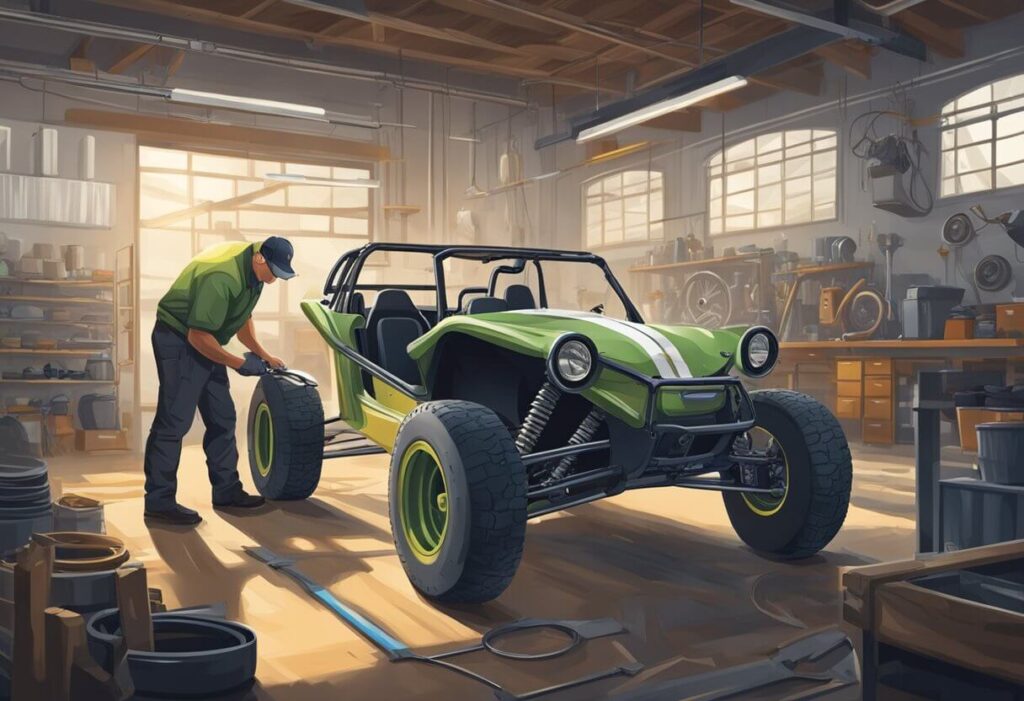
Routine Inspection
Regular maintenance and upkeep of a dune buggy frame with suspension is crucial to ensure its longevity and safety. A routine inspection of the frame and suspension components should be performed before and after every ride.
During the inspection, the owner should check for any cracks or signs of wear and tear on the frame and suspension components. Any loose bolts or nuts should be tightened, and any damaged or worn-out parts should be replaced immediately.
Repair and Replacement Tips
If any damage or wear is detected during the inspection, the owner should repair or replace the affected parts before using the dune buggy again. It is recommended to use high-quality replacement parts that are specifically designed for the make and model of the dune buggy.
When replacing parts, it is important to follow the manufacturer’s instructions and use the correct tools. The owner should also ensure that the replacement parts are compatible with the existing components and that they do not compromise the safety of the dune buggy.
In addition to regular inspections and repairs, it is important to clean the frame and suspension components after every ride. This will help prevent the buildup of sand, dirt, and debris, which can cause damage and wear over time.
Overall, proper maintenance and upkeep of a dune buggy frame with suspension is essential for its safety and longevity. Regular inspections, repairs, and cleaning can help ensure that the dune buggy remains in good condition and provides a safe and enjoyable riding experience.

